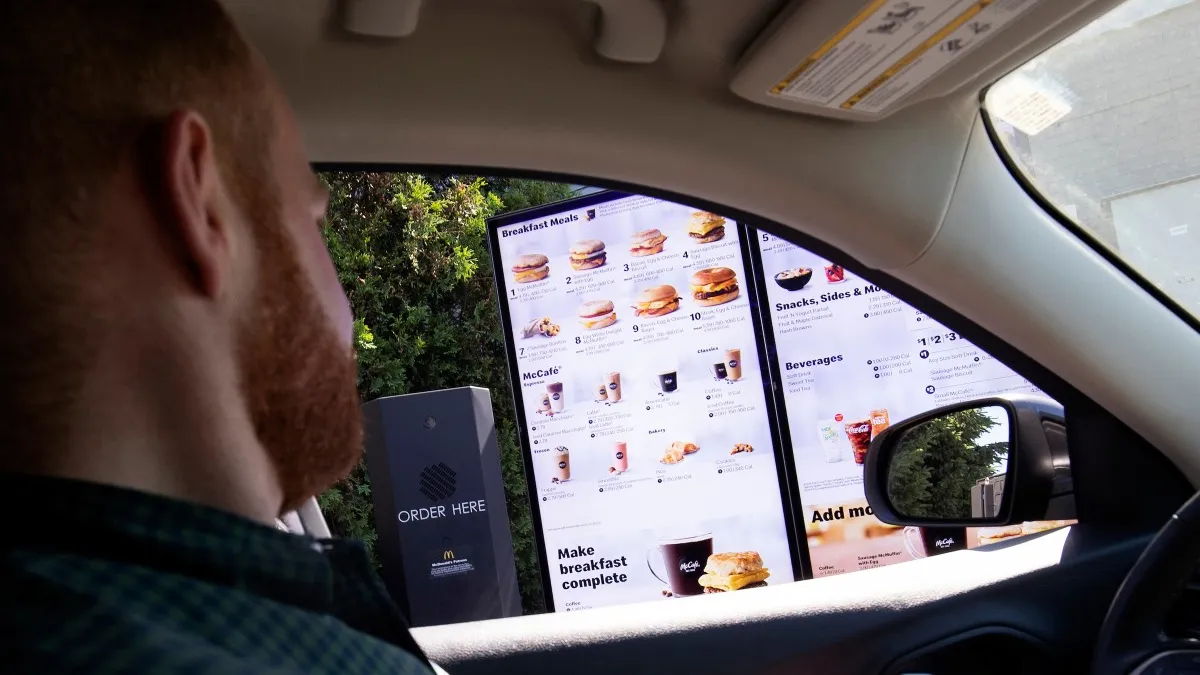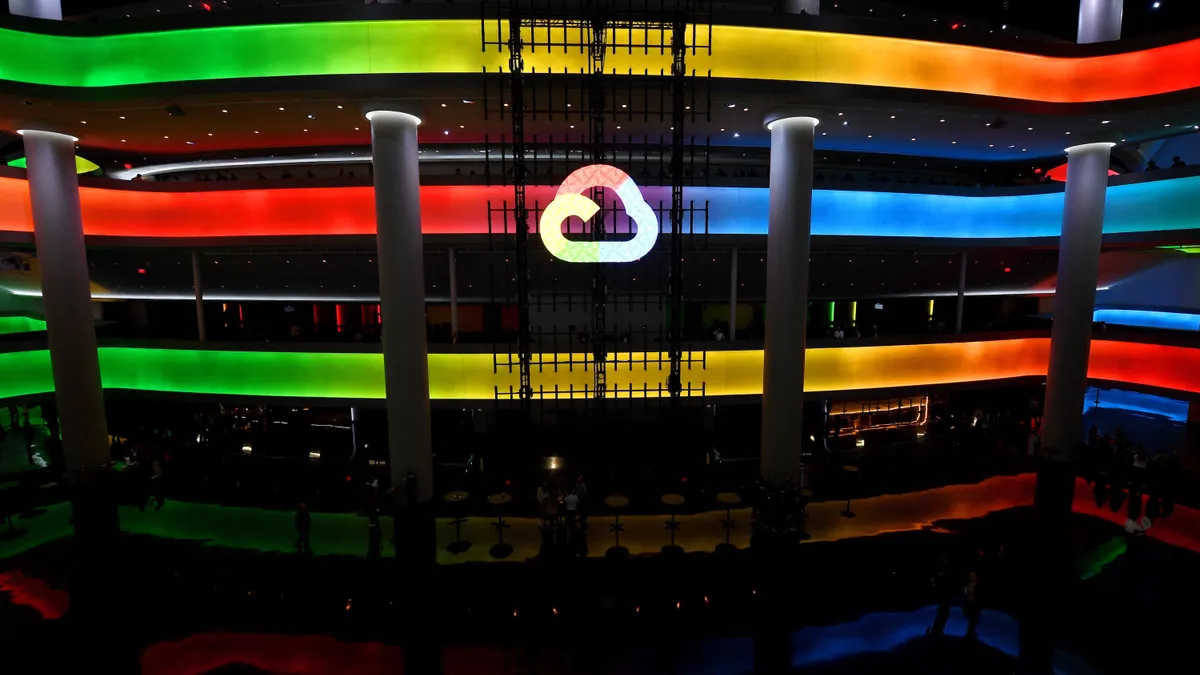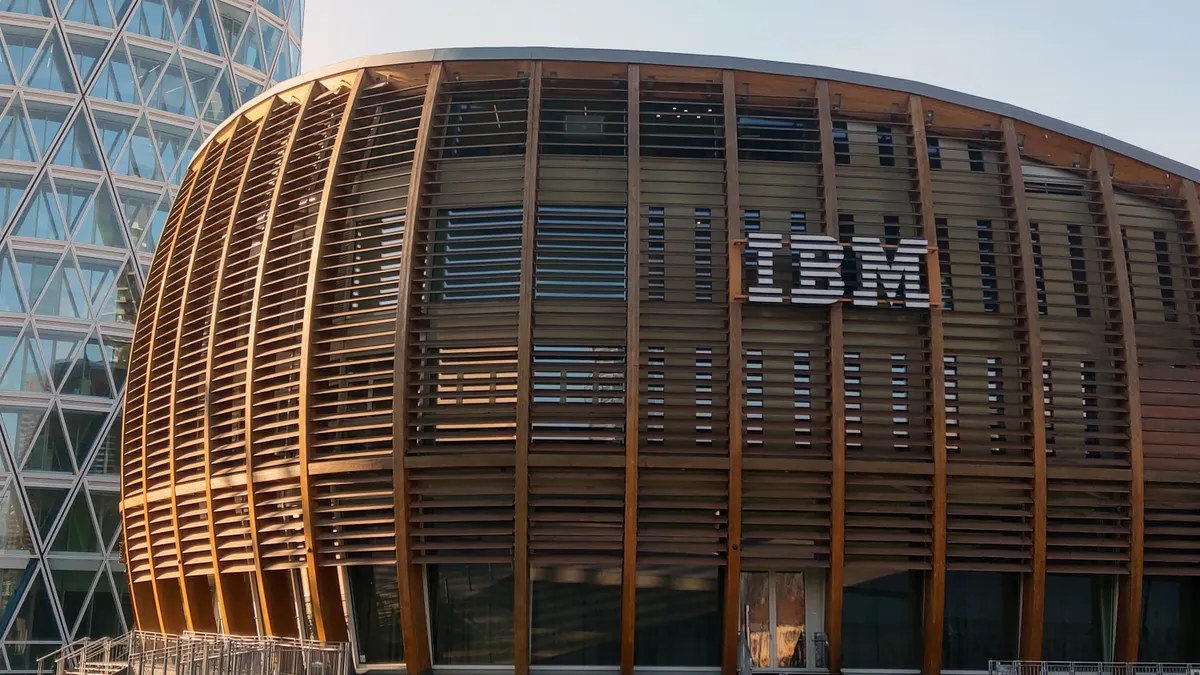Daniel McCann, 5Thru founder, became frustrated with waiting in growing drive-thru lines — sometimes 15 cars deep — to buy his morning coffee.
As a payments expert, he knew that payments at the window take 23 to 25 seconds to process in addition to cook times, which adds up if there is a line. Instead of waiting, he would often forgo the drive-thru and head to the office without his caffeine fix.
He thought there had to be a better way.
"Drive-thrus are one of those things that are still being done today as they were 50 years ago," McCann told Restaurant Dive. "It's largely ignored the new technologies that are available today. I think it's ripe for an overhaul to bring it into the 21st Century."
His drive-thru tech company, which launched last year, has been creating systems and platforms to enable everything from license plate recognition that can be used to automatically process payments to conversational AI that can take and process orders. His company is also working on a way for customers to order from the drive-thru in their cars on the way to the drive-thru, where they would just pick up their orders, reducing wait times even more.
Other companies like ZIVELO, Dynamic Yield and Valyant AI are offering similar solutions to improve not just drive-thru times, but also the entire customer experience.
Why a change is needed
Cutting down drive-thru times will be crucial to long-term success of fast food restaurants, especially since this area makes up 60% to 70% of sales. Speed of service has declined in recent years, especially with items per transaction growing. In 2003, drive-thru times averaged 190 seconds, growing to 234 seconds in 2018, according to QSR Magazine. Shaving off a few seconds could be the difference among chains growing or slowing, Valyant AI founder Rob Carpenter told Restaurant Dive. His company has been developing an AI drive-thru platform as well.
Competition has been fierce in the fast food industry and many restaurants expanded as part of their strategies to grow sales in recent years, but now the market is oversaturated, Carpenter said. Fast food restaurants also are facing growing labor costs and thinning margins due to consumer demand for lower-priced value menus, he said. So there are fewer ways to grow lately, except through technology, he said.
"Drive-thrus are one of those things that are still being done today as they were 50 years ago. It's largely ignored the new technologies that are available today. I think it’s ripe for an overhaul to bring it into the 21st Century."

Daniel McCann
Founder, 5thru
Consumers are also more widely accepting of technology in all aspects of their lives, with the average U.S. household owning 5.2 smart devices, MasterCard SVP for New Commerce Partnerships Stephane Wyper said during a presentation at the National Restaurant Association Show in May. MasterCard, which has been growing its presence in the restaurant segment through technology, partnered with self-service kiosk provider ZIVELO to test AI menu boards at Sonic earlier this year.
The rise and seamless adoption of digital kiosks across many channels and aspects of life — such as gas pumps and airport terminals — signal future success for this technology in the restaurant world, ZIVELO CEO Healey Cypher said at the NRA Show.
"Point of sale is becoming smarter," Cypher said. "It's changing. It's not just a person taking orders."
While voice ordering and AI have been around for several years, they just weren't being used or applied to restaurants until recently, McCann said. The voice technology also wasn't as accurate as it is today.
"[Voice] technology has moved to a point where it is commercially viable," McCann said.
And many restaurants are more than willing to give it a shot.
The new drive-thru
McDonald's has been making the biggest push to improve the drive-thru experience, especially since it has some of the slowest drive-thru times, according to QSR Magazine. It's currently testing its automated voice drive-thru system, cut down its late-night menu and chopped time- and labor-consuming premium items from its daytime menu. The chain purchase of Dynamic Yield, which specializes in personalization at the drive-thru, also opened up the company to broader drive-thru tech applications.
McDonald's has already rolled out Dynamic Yield's technology to 700 drive-thrus in the U.S., McDonald's CEO Steve Easterbrook said during an April earnings call with investors.
"Over time, using data from the millions of customers that we serve daily, the technology will get smarter and smarter through machine learning," Easterbrook said. "And [by] using the data collected based on current restaurant traffic at the drive-thru, the technology will begin to suggest items that can make peak times easier on our restaurant operations and crew."
The fast food giant is far from the only chain looking into improving drive-thru experience. Valyant AI is testing its platform where an AI dubbed "Holly" takes and processes orders at Good Times Burgers & Frozen Custards in Denver. In addition to Good Times Burgers, Valyant AI has been in discussions with several large chains as well as franchisees and small-unit operators, the company told Restaurant Dive.
The biggest difference AI can provide is consistent customer service compared to human counterparts. Given the declining overall satisfaction that customers have had at fast food compared to casual dining, the pressure is on now more than ever to retain loyal customers.
"If you buy a Big Mac in Anchorage or Denver or New York, it's roughly the same product and experience," Carpenter said. "But what we have all seen is customer service can vary widely. You can get someone who is not really enjoying their job or you can get somebody who is super focused and trying to be a manager."
The ongoing labor shortage is also making it more difficult to get consistent customer service and efficiency at fast food restaurants. Having one person devoted just to the drive-thru means there are fewer workers preparing food, cleaning up and doing other processes that can improve the overall experience, Carpenter said.
Through automation, restaurants can free an employee from being just at the drive-thru to float around the restaurant and complete other roles, including ones that the restaurant is having trouble filling, Carpenter said.
"Ultimately what we're going to see is fast food employees handling the fringe cases that are complicated, and doing more interactions with customers at the window all the while being more efficient with their job and the customer is getting through quicker," Carpenter said.
Upselling rates also improve since AI can be programmed to upsell 100% of the time whereas human employees tend to upsell 40% of the time, Carpenter said. That means more potential revenue from higher check counts.
"If you buy a Big Mac in Anchorage or Denver or New York, it's roughly the same product and experience. But what we have all seen is customer service can vary widely."

Rob Carpenter
Founder, Valyant AI
AI platforms also can allow restaurants to better collect data on their customers that they didn't necessarily have before with static menus.
Drive-thrus could use voice imprints to recognize customers and apply their orders to loyalty programs, T3 President Ben Gaddis told Restaurant Dive. T3 is working on facial recognition that will recognize a person at the drive-thru and apply the order to that customer's loyalty program. The program, which works with Olo and Punchh, will be able to process payments, provide recommendations and other features.
These AI systems can also provide recommendations based on prior order history, McCann said.
The data collected also allows restaurants to better understand the regional customer differences and how consumers from Boston might order differently from those in Austin, Cypher said.
"Not every menu should be the same, because we all have different needs and requirements. Menus should be able to adapt to that — whether it's nutritional requirements I might have or my wife might have," Wyper said in an interview with Restaurant Dive.
Improving customer experience
In addition to offering more personalization, AI can improve speed of service. Following its breakfast pilot at Good Times Burgers, Valyant AI reports a seven-second reduction in wait time, according to a press release. It expanded its test of its platform to dinner and lunch dayparts in June, which could yield additional speed of service especially since lunch and dinner can have more complicated orders.
Good Times Burgers customers have responded positively to using an AI at the drive-thru, Carpenter said. While there was initial reticence about using the AI system, drawing on customer memories of being stuck in an automated telephone tree, biases and preconceived notions were quickly dropped, Carpenter said.
During its test, Valyant added a sign telling drive-thru customers they could opt out of the AI ordering by asking for a human employee. Carpenter originally thought there would be a 50% to 60% opt-out rate, but it ended up being 5%.
His company also noticed that customers quickly started interacting with "Holly" as if she were a person by telling her "thank you," so the company programed the system to respond with a "you're welcome," creating another added element to the interaction.
"It is a cool, unexpected experience," Carpenter said. "As [customers] get to the window, they are automatically in a better mood."
AI also can be used to process orders in different languages, which can provide more consistent customer service among units. MasterCard and ZIVELO's technology uses natural language processing and underlying technology that helps distinguish between accents, what people are intending to say and what they are actually trying to order, Wyper said.
"This can be fully customized. Whether it's Spanish, French, German, you can build a technology now that can be customized to make sure every customer interaction [is understood]," Wyper said.
The tech also allows for multiple people to order at the same time, as is the case with Sonic's rows of drive-up menu boards, without having to wait in line or for someone to be available to talk to them, Cypher said.
Valayant AI's "Holly" also uses natural language processing, and the company is building up the platform to eventually have multiple language capabilities.
"That is what we think will be a huge value proposition and help break down barriers when ordering food," Carpenter said.
Emma Liem contributed to this article.





















